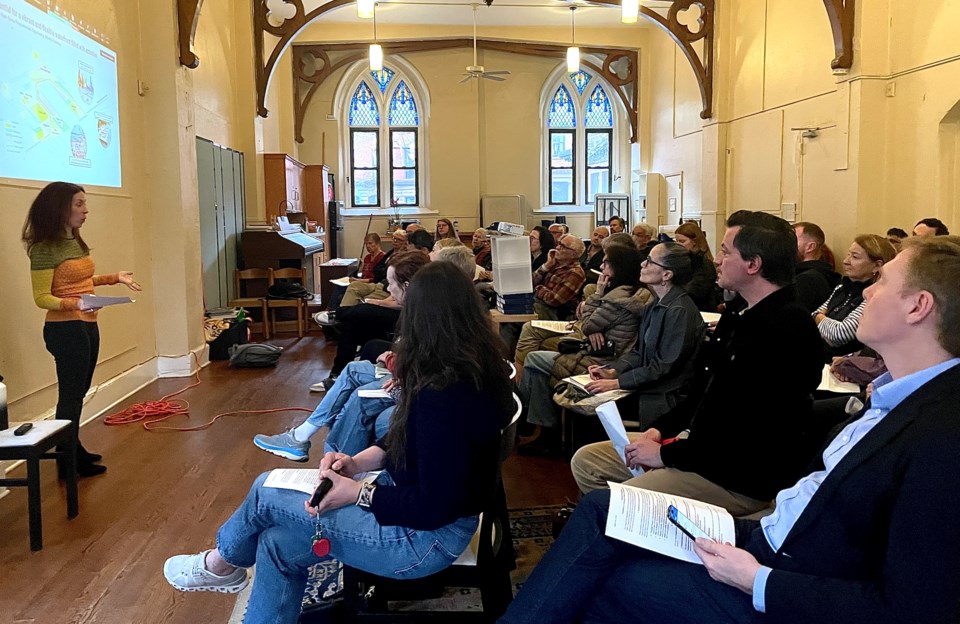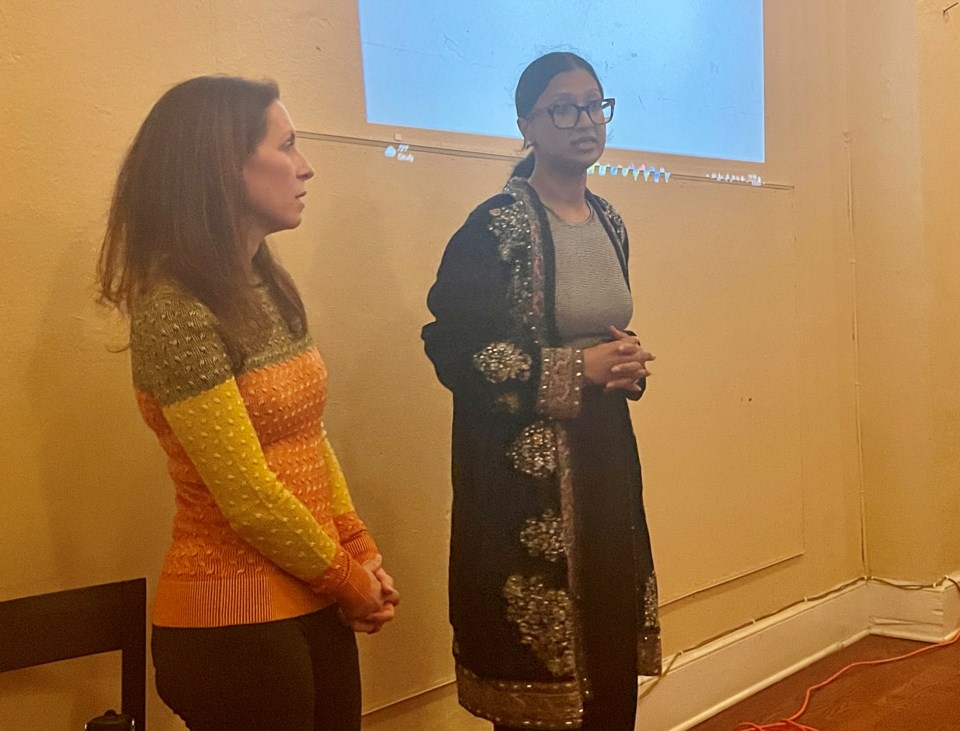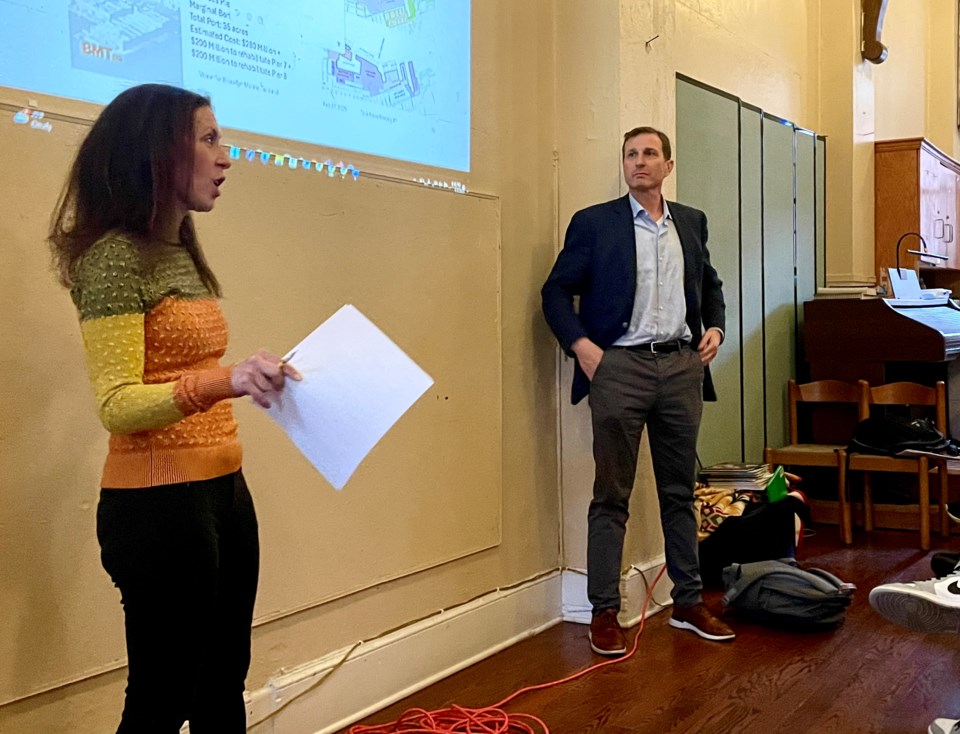Members of the Cobble Hill Association, City Council Member Shahana Hanif, U.S. Representative Dan Goldman and many Brooklyn residents agreed on one thing during a Thursday meeting on the future of the Brooklyn Marine Terminal: the city's current plan is not ready for approval.
The Brooklyn Marine Terminal Taskforce was set to vote on the Economic Development Corporation's plan on April 11 but was delayed to later this month, according to the Brooklyn Daily Eagle. As the task force has the ultimate authority on whether the project moves forward, Cobble Hill Association President Amanda Nichols held a primer for residents about the city's plan for the 122-acre site, which will turn the Columbia Waterfront area into what the city dubs as the "Harbor of the Future," with new housing, commercial spaces and shipping docks.
The toughest pill for residents to swallow was EDC’s plan to finance the entire $3 billion project mostly on profits made by building 7,000 to 9,000 new housing units on public land.
Goldman told the crowd that “either they [the city] don’t have the money or they are simply unwilling to pay for the whole thing."
Resident Ben Baxt and Nichols questioned why the EDC had ruled out other financing methods.
“Are there other ways to pay for some of this? Yes,” Nichols said. “There are other buckets of money that should be looked at.”
Nichols and residents at the meeting entertained the idea of pushing the EDC to build smaller piers to bring down the $3 billion price tag. However, that would make it harder for larger ships to dock, decreasing revenue, they said.

Baxt said he is skeptical of the project’s economic viability, noting how the previous owner, the Port Authority of New York and New Jersey, in recent years declined to fix the marine terminal prior to selling it to the city.
The EDC wants to build new piers and cold storage facilities as a part of a “Blue Highway" to incentivize container ships to unload cargo in Brooklyn, instead of at Port Elizabeth, N.J., to decrease truck traffic as the goods make their way to the Hunts Point Food Distribution Center in the Bronx.
Baxt had his doubts: “It can't compete with the other container ports in the region because there's not enough space and there's not appropriate links to transportation."
Unlike other ports, which are typically financed with bonds, Baxt wondered why the EDC chose to use housing as collateral. The marine terminal “will not generate enough revenue to repay the bondholders," he surmised.
Nichols acknowledged that “the train is leaving the station” for community input. The goal for the community group was to reduce the number of housing units, increase affordability and make sure there was adequate infrastructure upgrades to support so many new housing units.

Council Member Hanif won praise for criticizing EDC’s housing plan when she stated that it was "not acceptable" that 75% of their proposed housing were luxury units.
“We are in an affordability crisis and we want to build affordable housing and the best and easiest way to do that is on public land,” Hanif said. She described the sheer number of new units is akin to “creating a new neighborhood, from the ground up.”
Nichols, Hanif and Goldman, in addition to Mike Racioppo, the district manager of Community Board 6, who are all on the taskforce, said they would not approve the current proposal.
Hanif and Nichols were especially critical of EDC’s community engagement process.
“Each time, as we neared a pivotal moment, it seemed very predetermined,” Hanif explained. “It seemed that we were arriving at a position that had already been decided on for us and so that's really frustrating.”
Nichols and Goldman gave EDC credit for establishing the task force with as much power as it has.
“A lot of them are working really hard so I don't want it to be all negative,” Nichols said. “But, they are taking the feedback now and I believe they're starting to incorporate it.”
Jeff Holmes, senior vice president of public affairs at EDC, said the transformation of the BMT is "a generational moment."
"Over the last eight months, NYCEDC has continuously engaged with the Brooklyn Marine Terminal task force and advisory groups in addition to over 3,000 community members who have attended our public workshops, site tours, webinars and feedback sessions. Throughout this process, key community priorities have consistently emerged: the need for a modern and sustainable port focused on getting trucks off our streets, improved transportation options and connections, increased waterfront open spaces, resilient infrastructure and protection from climate change, affordable housing and the development of workforce training and career pipelines. Each of these areas is at the forefront of NYCEDC’s planning process and our vision for the terminal," Holmes said in a statement.
*Editor's Note: This story was updated on April 8 to include a statement from the EDC.





You must be signed in to comment. Please sign in or register.